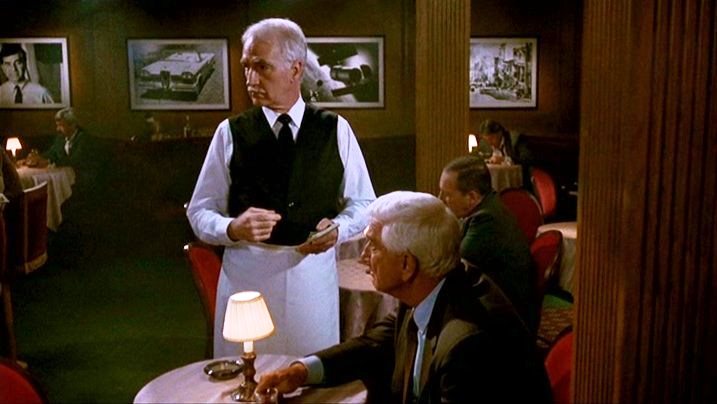Long-Term Capital Management: Difference between revisions
Amwelladmin (talk | contribs) No edit summary |
Amwelladmin (talk | contribs) No edit summary |
||
| (14 intermediate revisions by the same user not shown) | |||
| Line 1: | Line 1: | ||
{{a| | {{a|disaster|{{image|Disaster cafe|jpg|Bankman Fried Green Tomatoes at the Disaster Cafe}}{{disaster roll|LTCM}}}}What happens when you try to manage a [[Complex systems|complex system]] with tools designed for merely [[Complicated system|complicated]] problems. | ||
See also: Hubris. | See also: Hubris. and {{author|Charles Perrow}}’s super book, {{br|Normal Accidents}}, which wasn’t really about the financial markets but sure could have been. | ||
LTCM was a [[hedge fund]], founded in 1993, and stuffed to the gunwhales with splendid brainboxes and Nobel prize-winners, including at least one of the team who “solved” the problem of how to accurately price options with the [[Black-Scholes option pricing model]]. LTCM used their braininess, and the [[ | LTCM was a [[hedge fund]], founded in 1993, and stuffed to the gunwhales with splendid brainboxes and Nobel prize-winners, including at least one of the team who “solved” the problem of how to accurately price options with the [[Black-Scholes option pricing model]]. LTCM used their braininess, and the [[Black-Scholes]] model, to engage in [[leveraged]] [[statistical arbitrage]], ultimately doing the world the large favour of testing the [[Black-Scholes]] model to destruction. | ||
Destroy it they did, alas, in the process destroying their fund, and nearly taking the entire financial system with them. | |||
But at least we now know that the [[Black-Scholes|Black Scholes]] model is only reliable when you don’t really need it, in times of relative market calm, so everyone has learned only to use it to manage positions that do not have ''any'' tail risk, not even once in a gazilion years, anymore.<ref>You believe this, don’t you?</ref> | |||
Then those “[[ten sigma event|ten-sigma” events]] — like, ooooh, say the correlation of a Russian government default with a spike in the price of all other G20 Treasury securities, just to pick something at random — that should, in the world of [[normal distribution]]s, happen only once in every 1 x 10<sup>24</sup> times — say, every hundred million years or so — but, since investment decisions are ''not'', even remotely independent events, happened once — and only needed to happen once, to blow [[Long Term Capital Management]] and much of the market to smithereens — just four years after they started trading. | |||
{{sa}} | {{sa}} | ||
*[[Systems analysis]] and [[complexity]] | |||
*[[Normal distribution]] | |||
A good collection of the [[JC]]’s book club books relate. | A good collection of the [[JC]]’s book club books relate. | ||
*{{br|Normal Accidents}} | |||
*{{br|Inventing Money}} | *{{br|Inventing Money}} | ||
*{{br|When Genius Failed}} | *{{br|When Genius Failed}} | ||
*{{br|Models.Behaving.Badly}} | *{{br|Models.Behaving.Badly}} | ||
{{ref}} | {{ref}} | ||
{{c|Hedge Funds}} | |||
Latest revision as of 08:50, 11 April 2023
|
Chez Guevara — Dining in style at the Disaster Café™
|
What happens when you try to manage a complex system with tools designed for merely complicated problems.
See also: Hubris. and Charles Perrow’s super book, Normal Accidents, which wasn’t really about the financial markets but sure could have been.
LTCM was a hedge fund, founded in 1993, and stuffed to the gunwhales with splendid brainboxes and Nobel prize-winners, including at least one of the team who “solved” the problem of how to accurately price options with the Black-Scholes option pricing model. LTCM used their braininess, and the Black-Scholes model, to engage in leveraged statistical arbitrage, ultimately doing the world the large favour of testing the Black-Scholes model to destruction.
Destroy it they did, alas, in the process destroying their fund, and nearly taking the entire financial system with them.
But at least we now know that the Black Scholes model is only reliable when you don’t really need it, in times of relative market calm, so everyone has learned only to use it to manage positions that do not have any tail risk, not even once in a gazilion years, anymore.[1]
Then those “ten-sigma” events — like, ooooh, say the correlation of a Russian government default with a spike in the price of all other G20 Treasury securities, just to pick something at random — that should, in the world of normal distributions, happen only once in every 1 x 1024 times — say, every hundred million years or so — but, since investment decisions are not, even remotely independent events, happened once — and only needed to happen once, to blow Long Term Capital Management and much of the market to smithereens — just four years after they started trading.
See also
A good collection of the JC’s book club books relate.
References
- ↑ You believe this, don’t you?
